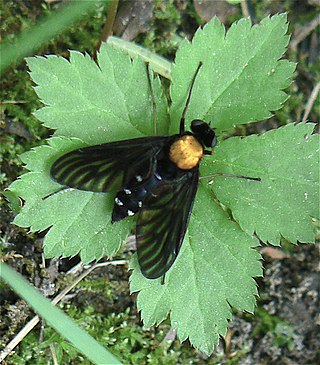
Chrysopilus is common, worldwide genus of predatory snipe flies. There are approximately 300 species in the genus, including fossil members that are sometimes found in amber.

Rhagionidae or snipe flies are a small family of flies. They get their name from the similarity of their often prominent proboscis that looks like the beak of a snipe.

Rhagio is a worldwide genus of predatory snipe flies. Several species in this genus are referred to as downlooker or down-looker flies because they sometimes perch on tree trunks in a head-down position. There are approximately 170 species. They can be distinguished from other rhagionids by the open anal cell on the wings and the lack of a kidney-shaped arista.

Athericidae is a small family of flies known as water snipe flies or ibis flies. They used to be placed in the family Rhagionidae, but were removed by Stuckenberg in 1973. They are now known to be more closely related to Tabanidae. Species of Athericidae are found worldwide.
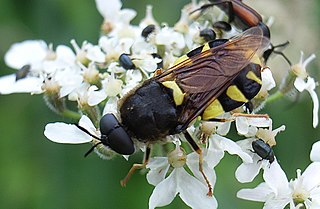
Stratiomys chamaeleon, the clubbed general, is a European species of soldier fly.
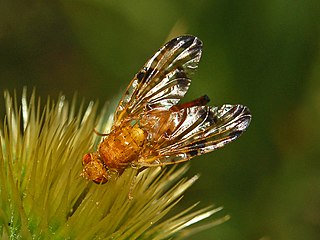
Xyphosia miliaria is a species of tephritid or fruit flies in the family Tephritidae.

Empis is a genus of dance fly, in the fly family Empididae. It contains the following subgenera and species:

Atherix ibis, the yellow-legged water-snipefly, is a species of ibis flies belonging to the family Athericidae, a small family very similar to Rhagionidae.
Jan Daniel Preysler, also known as Johan Daniel Preyssler or Johann Daniel Preyßler was a Czech entomologist.

Chloromyia formosa is a species of soldier flies belonging to the family Stratiomyidae. Another name for it is Broad centurion.

Oplodontha viridula, the common green colonel, is a European species of soldier fly.

Sargus iridatus, the iridescent centurion, is a European species of soldier fly.

Sargus bipunctatus, the twin-spot centurion, is a European species of soldier fly.
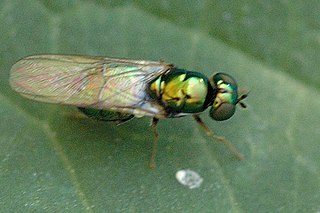
Microchrysa polita, the black-horned gem, is a species of soldier fly found in Europe, Asia, and North America.

Chorisops tibialis, the dull four-spined legionnaire, is a Palearctic species of soldier fly.

Atherix is a genus of 'ibis flies' belonging to the family Athericidae, a small family very similar to the Rhagionidae. Species within this genus are present in most of Europe and also in the Nearctic realm.
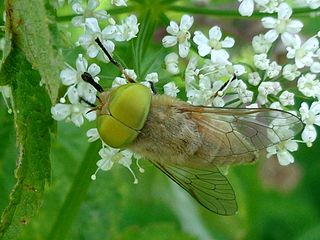
Atylotus fulvus is a species of 'horse flies' belonging to the family Tabanidae.

Hybos femoratus is a species of fly in the family Hybotidae. It is found in the Palearctic.

Platypalpus luteus is a species of fly in the family Hybotidae. It is found in the Palearctic.
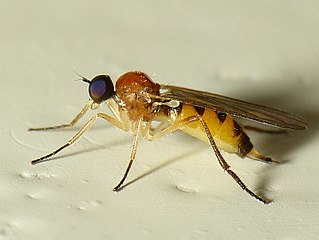
Leptopeza flavipes is a species of fly in the family Hybotidae. It is found in the Palearctic.



















